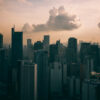The digital divide is a problem that many countries have been facing since the advancement of technology and its integration into education. With the sudden need to shift to remote learning during the global pandemic, the gap between those with access to adequate technology and those among the disadvantaged sectors has grown. With the safety measures countries have been implementing to safeguard students and communities, the conversation on this divide is in the spotlight, and leaders beyond those in the education sector have come to recognize its impact on national development and the economy.
This inequality in online education has skyrocketed not only as a result of the inaccessibility of students to materials but also because of the economic gap that affects both the teachers and parents that aid in student learning. Funds to provide materials to assist educators are inadequate, and a lack of proper training for educators from marginalized sectors also hinders the effective use of technology in distance and remote teaching.
It is important to recognize that steps to address such inequalities would need the involvement of multiple stakeholders. As the issue involves not just the students, but parents and educators as well, initiatives must also be guided by the problems they face to better grasp and comprehend the contexts of each sector to put forth sustainable and effective solutions.
An example of such an initiative is the EdVision 2.0 Program. Highlighting collaboration between schools, educators, and other stakeholders, the program seeks to provide innovative solutions to support e-learning. In digitizing education, EdVision 2.0 works to promote the following:
- Personalize Teaching
- Engaged Learning
- Parent-Educator Collaboration
To encourage a more personalized learning experience, the program provides educators access to both hardware and software that aid in the efficient preparation and execution of learning modules. Educators are also equipped with the proper training to support the transition from a classroom to a digital learning environment and are guided with strategies for establishing effective communication with students. Through Lenovo’s partnership with Microsoft, the program’s benefits include digital upskilling with Microsoft Certification Programs and educator support groups that will connect members of the academe around the globe.
Transporting students beyond the walls of their classrooms, the introduction of immersive learning environments will also help to engage students in their learning. With VR technology made available to the schools under the program, teachers and students alike will be exposed to news ways of approaching and absorbing modules.
In transforming the learning environment and processes, students will be able to experience a more immersive and holistic educational experience informed by their context, with educators who are effectively guided.
Yet, even with such initiatives in place, the fact remains that over 60% of households in the Philippines do not have access to the internet and digitalization. Students and teachers are still struggling to access the necessary resources to keep up with the fast-paced world of technology.
It is imperative then that governments and private institutions initiate the necessary changes, and actively utilize programs such as EdVision 2.0 to better support the digitalization of education. More than just providing the hardware, solutions focused on informing and educating the necessary stakeholders would significantly accelerate digital transformation.
Smart technology has been proven across multiple studies to be an effective tool in education, especially now that we are in the digital age. With Lenovo’s goal of “Smarter Technology For All”, programs like EdVision 2.0 encourage the innovation and implementation of newer models of teaching and learning necessary for students to excel in the digital world.
To learn more about the EdVision 2.0 Program visit www.lenovoedvision.com.








































































































